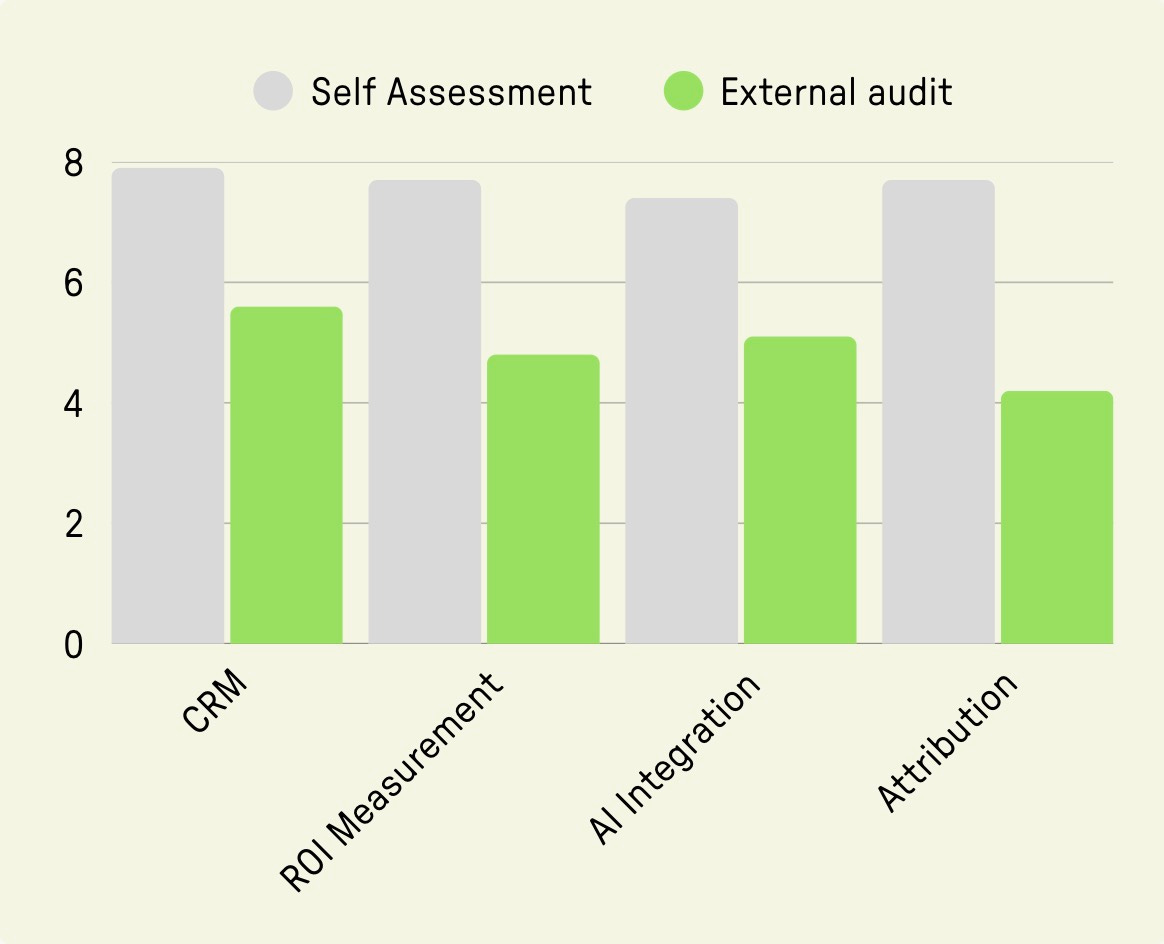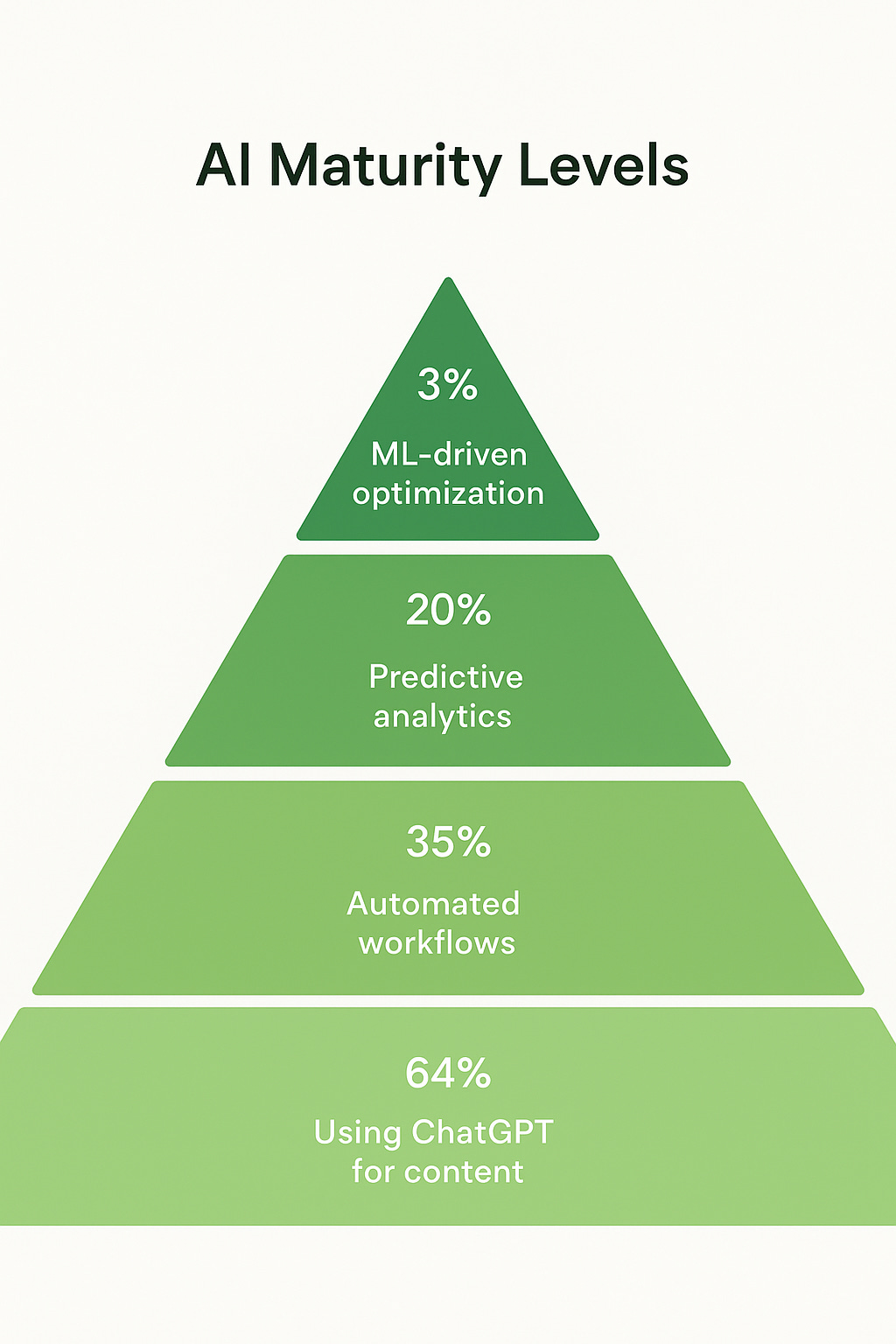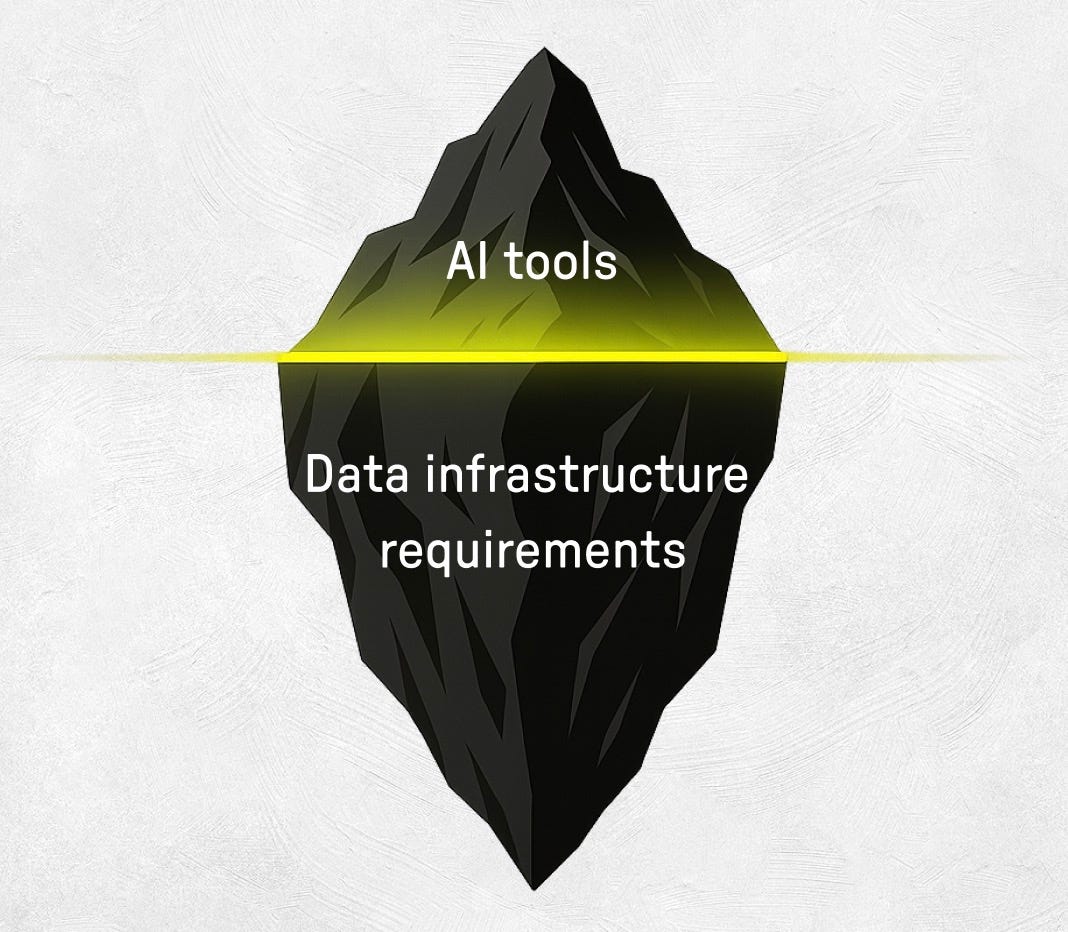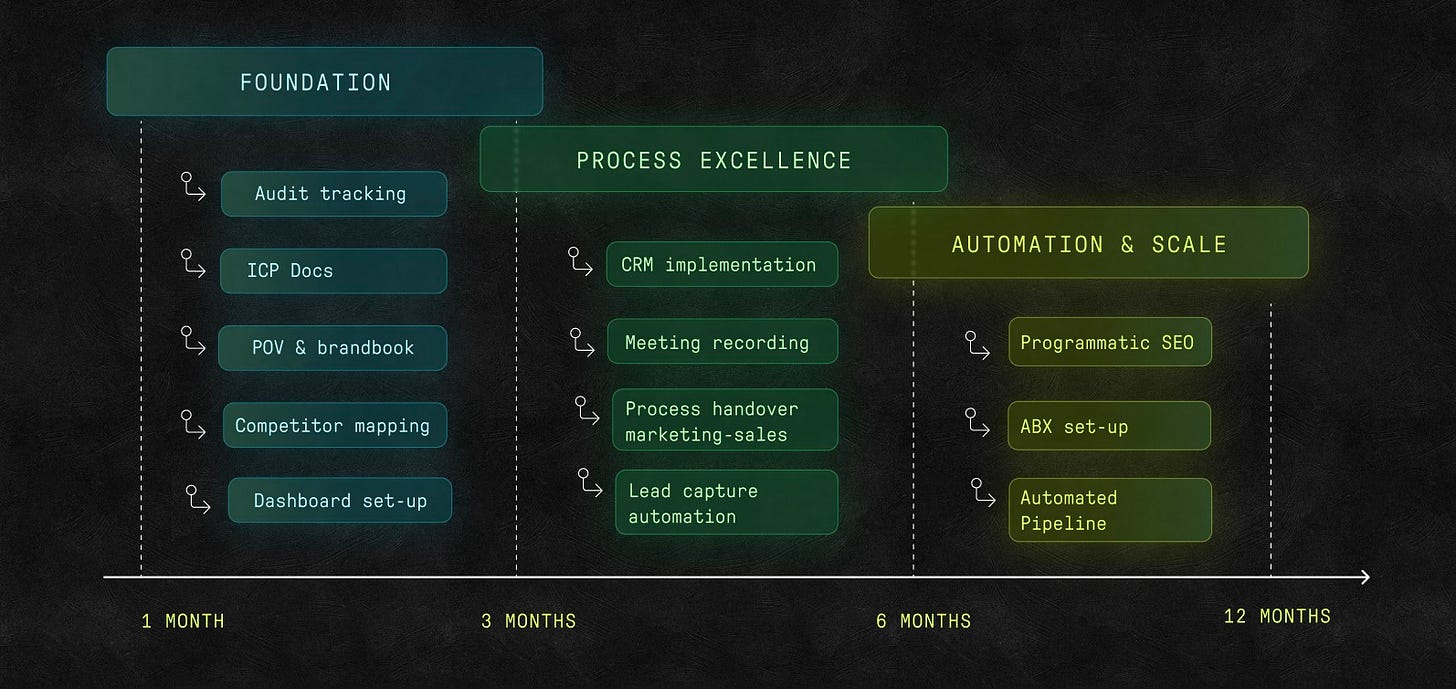2026 and the 23% delusion
What the data reveals about real AI readiness in marketing organizations.
In 2016, IBM bet $62 billion that Watson would revolutionize healthcare.
The pitch was compelling: AI that could diagnose cancer better than doctors, recommend treatments faster than specialists, process medical literature at superhuman speed.
MD Anderson Cancer Center signed on for $39 million. Memorial Sloan Kettering invested years training Watson on lung cancer. By 2018, the project was dead.
The problem wasn’t the AI.
It was the foundations.
Watson choked on inconsistent medical records, unstructured physician notes, and incompatible data formats. The AI was brilliant(-ish). But it was trying to build a skyscraper on quicksand.
Classic case of “garbage in, garbage out” at enterprise scale.
Which brings us to a striking pattern in our latest research.
The perception gap
Our Digital Maturity Observatory (only available in French) surveyed 200 French marketing leaders. We asked them to rate their capabilities across 11 digital dimensions, then had external consultants audit a sample of these organizations.
The disconnect is substantial:
Organizations systematically overestimate their digital maturity by 23%. But the nuance is more interesting than the average.
Notice how companies rate themselves almost identically on CRM (a 30-year-old discipline) and AI (which exploded 2 years ago). This uniform confidence across vastly different technology maturities suggests something deeper at play.
Psychologists call this the Dunning-Kruger effect—where limited knowledge leads to overconfidence. The less we know about a domain, the less we’re able to recognize our knowledge gaps.
What “AI Integration” Actually Means
Let’s examine AI specifically, where the perception gap reveals important insights:
44% of organizations claim they’ve “integrated AI” into their marketing operations. This would be impressive if true—it would mean nearly half of French companies have achieved meaningful AI adoption in just two years.
The reality:
64% are using consumer tools like ChatGPT for content generation
20% have implemented predictive scoring models
8% use AI for attribution modeling
3% have deployed true machine learning for budget optimization
There’s nothing wrong with starting with ChatGPT. But using it for copywriting isn’t “AI integration”—it’s AI experimentation. Understanding this distinction is critical for setting realistic roadmaps.
The “Foundation” problem
The Observatory reveals why this gap matters: 70% of companies lack basic data culture.
Consider what this means operationally:
Google Analytics misconfigured or running default settings
CRM systems with 40% duplicate records
No unified customer view across channels
Attribution limited to last-click models
CAC calculations done in spreadsheets, if at all
ROI defined as “total revenue divided by marketing spend”
This isn’t a technology problem. It’s an organizational readiness problem. And it explains why Watson failed at MD Anderson—even the most sophisticated AI can’t overcome foundational data issues.
Your 2026 roadmap
Regardless of starting point, the sequence remains consistent:
Phase 1: Data Foundation (Q1-Q2 2026)
Before any AI implementation:
Implement proper tracking infrastructure (server-side GTM, first-party data collection)
Clean and standardize your CRM data
Build a unified customer data platform
Establish data governance protocols
Invest in data literacy training
No shortcuts. No exceptions.
Phase 2: Process Excellence (Q2-Q3 2026)
Enhance proven processes:
Deploy lead scoring based on clean behavioral data
Implement dynamic segmentation using actual usage patterns
Optimize campaigns against measurable business outcomes
Create automated reporting that connects to revenue
You’re codifying what works, not hoping AI will fix what’s broken.
Phase 3: Intelligence (Q3-Q4 2026)
Now add sophisticated AI capabilities:
Custom models trained on your validated data
ML-driven audience creation and expansion
Multivariate creative optimization
Natural language analytics for insight discovery
Autonomous campaign management systems
This is where competitive advantage emerges—if you’ve done the groundwork.
The truth
The 23% overconfidence gap in our data isn’t a criticism—it’s an opportunity for clarity. Most organizations are in the same position: enthusiastic about AI’s potential, unclear about the prerequisites.
The CMOs who succeed in 2026 won’t be those with the most AI tools. They’ll be those who:
Honestly assess their current state
Invest in unsexy but essential foundations
Build systematically rather than chase trends
Measure progress against business outcomes, not activity metrics
Three Immediate Actions
1. Diagnostic honesty Take our 8-minute assessment to benchmark your actual digital maturity. Not where your team thinks you are—where external criteria place you. The clarity is worth more than the comfort.
2. Foundation audit Can you currently track a customer from first impression through to expansion revenue? If not, that’s your starting point. Everything else builds on this.
3. Resource reality check AI transformation requires sustained investment in people, processes, and platforms. If your digital budget is still under 50% of total marketing spend, you’re under-resourced for what’s ahead.
The Path Forward
Watson’s failure at MD Anderson wasn’t about AI limitations. It was about organizational readiness. The same dynamics are playing out in marketing organizations today, just with lower stakes and ChatGPT instead of cancer diagnosis.
The lesson is clear: AI amplifies what you feed it. Strong foundations produce strong results. Weak foundations produce expensive failures.
Your 2026 success depends not on how quickly you adopt AI, but on how thoughtfully you prepare for it.
The question isn’t whether to pursue AI-driven marketing. It’s whether you’ll build on solid ground or quicksand.
Let’s grow 👊
--- Jordan






